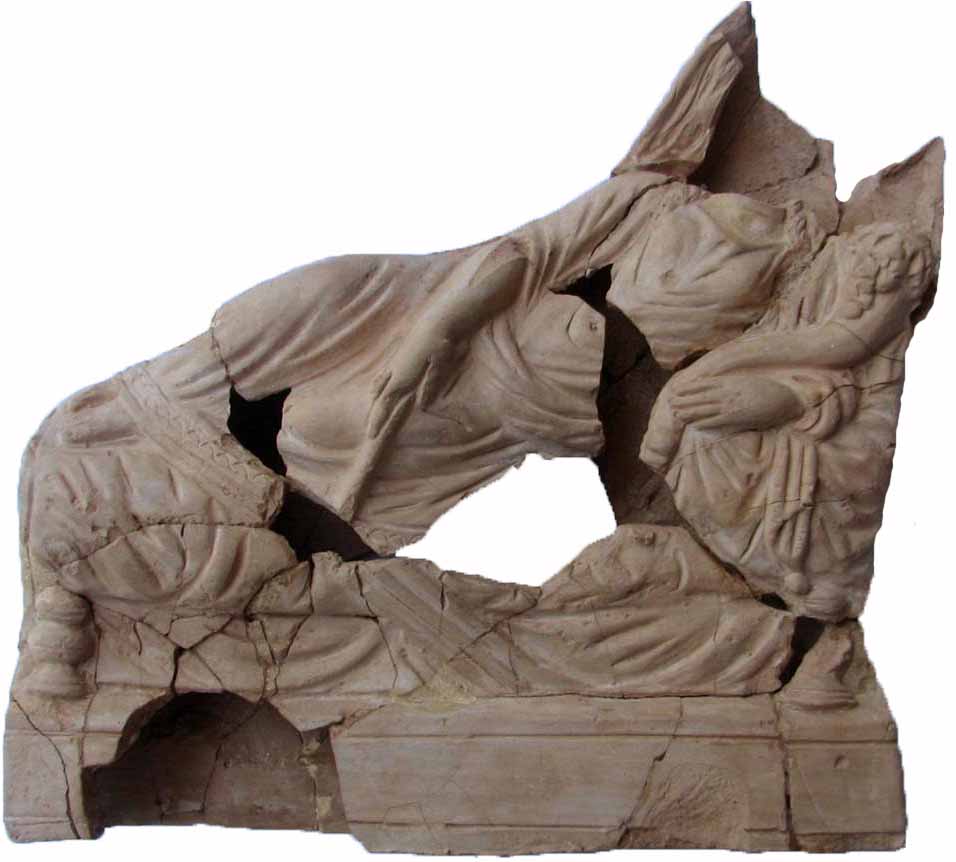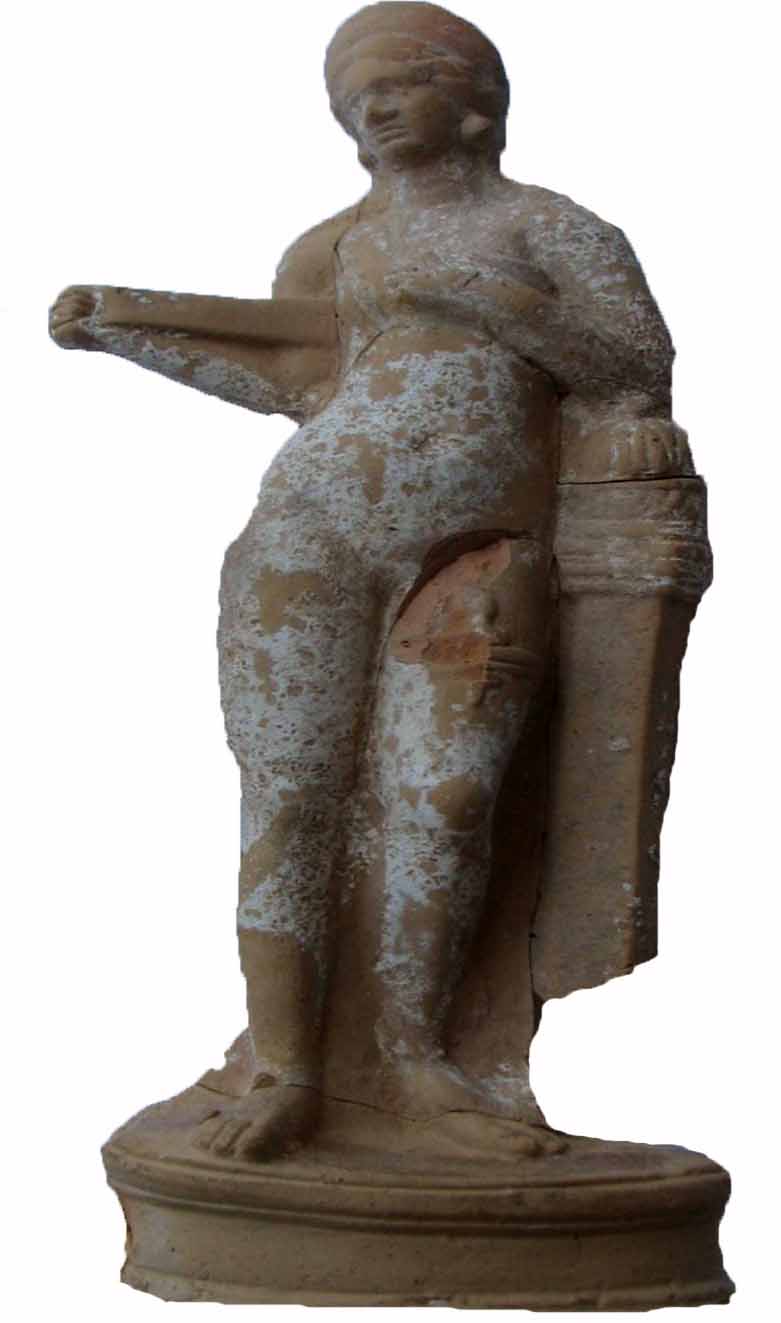|
The Terracotta Figurines from the 'House of Orpheus', Nea Paphos
The multifaceted significance of Cypriot terracottas has been acknowledged by the large corpus of published data, which addresses a series of interlinked issues, related to their typological, stylistic and chronological classification, the technology and techniques employed in their manufacture, their provenance, the mode of their production, the scale of their distribution, and their role as cultural artefacts in differing social contexts. Despite the substantial studies on earlier Cypriot terracottas, however, the Hellenistic and Roman terracotta figurines remain – with very few exemptions – highly neglected, and outside recent theoretical and scientific developments.
The terracotta figurines from the so-called 'House of Orpheus' in Nea Paphos, excavated by the Cypriot Department of Antiquities between 1982-1992 and by the University of Cyprus since 2010, form part of a significant material assemblage that spans in time from the Hellenistic to the Roman periods. These high-quality terracotta figurines fall within the mainstream of Cypriot art and its associated ancient technological and cultural systems. The submission of the research proposal Moulding Expressions of Culture: The Terracotta Figurines from the 'House of Orpheus', Nea Paphosby the Archaeological Research Unit to the University of Cyprus A.G. Leventis Foundation Research Committee has been recommended for funding. This project, bringing together scholars from different backgrounds, aims at a systematic and holistic assessment of this assemblage. Stylistic, analytical and theoretical methods of study are employed, tackling the aforementioned issues for these later periods of Cypriot Antiquity. Additionally, through comparative studies with other Cypriot and Mediterranean sites, the project proposes to examine continuing and changing patterns of production, distribution and function of Cypriot terracottas, as a result of the interplay between local structures and incoming Ptolemaic and Roman socio-political and socio-cultural impositions.
More specifically, the project aims at: 1. a typological, stylistic and iconographic analysis of the figurines; 2. their compositional study focusing on fabrics, slips and pigments; 3. a systematic attempt to interpret the analytical data addressing issues related to chronology, technology of manufacture, provenance and distribution; 4. The study of the inscriptions incised on some of the figurines; 5. the contextualisation of the figurines within their individual depositional intra-site context, as well as their broader socio-cultural and socio-political Cypriot and Mediterranean contexts; and 6. the reconstruction and visualisation of specific fragmented specimens in their anticipated full shape and colour. The implementation of this project will be achieved using a range of multidisciplinary approaches and methods, such as traditional examinations of style, statistics, social theory, chemical analyses, X-ray radiography and drawing software.
For the aims of the project the Archaeological Research Unit of the University of Cyprus collaborates with specialists from the Department of Multimedia and Graphic Arts of the Cyprus University of Technology, the Institute of Materials Science of the Demokritos National Centre for Scientific Research (Athens), and the Laboratory of THETIS Authentics LTD (Athens).
Research Team:
Prof. Demetrios Michaelides (University of Cyprus)
Dr Giorgos Papantoniou (Trinity College Dublin)
Dr Maria Dikomitou-Eliadou (University of Cyprus)
Dr Andreas Lanitis (Cyprus University of Technology)
Dr Eleni Aloupi-Siotis (THETIS Authentics LTD)
Dr Vasilis Kilikoglou (National Centre for Scientific Research "Demokritos"/ Athens Technological Educational Institute)
Dr Fernando Loizides (Cyprus University of Technology)
|




